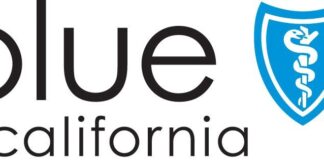SAN CLEMENTE, California, March 9, 2017 /PRNewswire-HISPANIC PR WIRE/ — In Cuba, coffee is a daily part of the relaxed island culture, where a hot cup is celebrated as a way to bring friends together, whether it is catching up on the day’s news over a “cafecito” at a street café or exchanging gossip over a pot of strong brew at home. And in Miami, where the largest numbers of Cuban expats now live, 3:05 pm has become the city’s official “cafecito” time, recognizing the power of Cuban coffee culture in bringing together the city’s diverse community.

In appreciation of this opportunity to slow down and reconnect in today’s fast-paced lifestyle, The California Milk Processor Board, creators of the iconic got milk? campaign, is introducing three Cuban-coffee inspired recipes to make at home and enjoy with a friend or two.
“Here in California, we’ve become accustomed to a grab and go lifestyle,” said social media influencer Eddie Zamora, creator of the Yum Yum Foodie brand and developer of the recipes. “Growing up in a Cuban household a large pot of coffee kept warm on the stove was the centerpiece of many social gatherings and long conversations. Coffee has the power to connect people from all over, from Miami to California, because it sparks conversation, friendship, and with these recipes, even excitement.”
Eddie’s recipes include the “Euro-Cuban,” a delicious blend featuring Nutella and whole milk with a touch of salt; the “Neighborhood Gossip” blending rich espresso and whole milk with dark rum for an adult offering served in a martini glass; and a Cuban Hot Chocolate, a treat perfect for kids with dark chocolate, wholesome milk, ground cinnamon and a pinch of cayenne pepper. Adding milk to coffee enhances the “mouth feel” as the fats in milk change the texture, making it thicker and adding smoothness. To view the recipes created exclusively for got milk?/ Toma Leche and a fun instructional video featuring Eddie Zamora, visit: www.gotmilk.com, www.tomaleche.com and follow got milk? via social media on Facebook/ Twitter @gotmilk and Instagram @officialgotmilk.
About Cuban Coffee Culture
Cuban coffee, from the way it’s prepared to how it’s enjoyed, has a long rich history. Coffee first came to Cuba in the 1700s, and the Caribbean island was once a major producer of coffee – in fact, its first plantations now have a place on the UNESCO World Heritage list(1). Coffee production began to decline largely due to the production and export of rum and cane sugar; yet coffee consumption continued to rise. In 1962, the Cuban government began to ration coffee. As a result, many Cubans drink café con chícharo, a mix of coffee beans and toasted chickpeas, adding sugar to curb the bitterness. Because of the limited quantity, coffee is always consumed in small amounts from small cups known as tacitas. As exports from Cuba are being lifted beginning with Cuban-grown coffee, a cultural coffee exchange between the Caribbean island and the U.S. is due. Here are a few helpful terms to understanding Cuban coffee:
- Café cubano or cafecito – espresso mixed with sugar
- Cortadito – espresso topped with steamed milk
- Café con leche –coffee and hot milk
About the CMPB
The California Milk Processor Board was established in 1993 to make milk more competitive and increase milk consumption in California. Awareness of “got milk?” is over 90% nationally and it is considered one of the most important and successful campaigns in history. The “got milk?” trademark is a federally registered trademark and service mark that was licensed by the National Dairy Board in 1995 for use in its advertising, including their long-running “Milk Mustache” campaign. The CMPB’s Spanish-language campaign began in 1994 using the tagline “Familia, Amor y Leche” (Family, Love and Milk). The “toma leche” (Drink Milk) campaign replaced it in 2006 in order to better align the English and Spanish language work. The CMPB is funded by all California milk processors and is an instrumentality of the California Department of Food and Agriculture.
Source:
(1) http://whc.unesco.org/en/list/1008
Photo – http://mma.prnewswire.com/media/476723/Euro_Cuban.jpg





